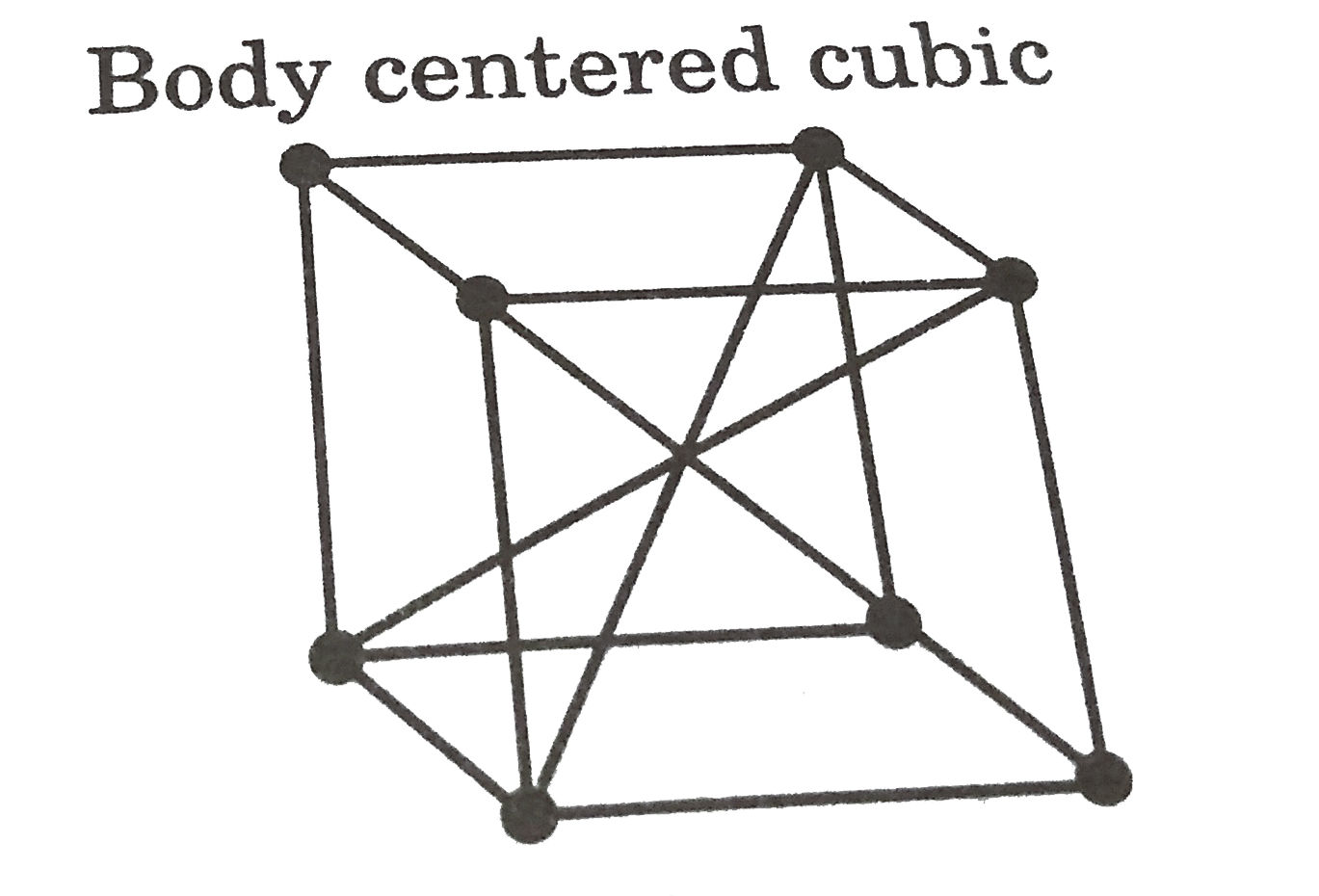Explain how much portion of an atom located at (i) corner and (ii) body-centre of a cubic unit cell is part of its neighbouring unit cell.
(i) The atom located at the corner of a cubic unit cell is shared by eight neighbouring unit cells.
Hence, it shares (18)th a portion of an atom.
(ii) The atom located at body-centred shares no portion of it with any neighbouring unit cell. It belongs fully to only one unit cell.
Topper's Solved these Questions
- THE SOLID STATEBOOK - KUMAR PRAKASHANCHAPTER - THE SOLID STATEEXERCISE - SECTION - C (TEXTUAL EXERCISE)
25 Videos
- THE SOLID STATEBOOK - KUMAR PRAKASHANCHAPTER - THE SOLID STATEEXERCISE - SECTION - D (NCERT EXEMPLAR SOLUTION)(MULTIPLE CHOICE QUESTIONS)
37 Videos
- THE SOLID STATEBOOK - KUMAR PRAKASHANCHAPTER - THE SOLID STATEEXERCISE - SECTION - A (EXAMPLES)
5 Videos
- THE P-BLOCK ELEMENTS BOOK - KUMAR PRAKASHANCHAPTER - THE P-BLOCK ELEMENTS EXERCISE - SECTION-E (MULTIPLE CHOICE QUESTIONS (MCQS)) (MCQS ASKED IN BOARD EXAM)
77 Videos
Similar Questions
Knowledge Check
How much prtion of an atom located at coner and at body centred of a cubic unit cell?
A1,12B12,1C18,1D18,12The coordination number of each atom in body centered cubic unit cell is
A(0,0,0) and (1/2,0,0)B(0,0,0) and (1/2,1/2, 1/2)C(0,0,0) and (0,1/2,0)D(0,0,0) and (0,0,1/2)
Explain how much portin of an atom located at (a) corner and (b) body centre of a cubic unit cell is part of its neighouring unit cell.
View SolutionExplain how much portin of an atom located at (a) corner and (b) body centre of a cubic unit cell is part of its neighouring unit cell.
View SolutionExplain how much portin of an atom located at (a) corner and (b) body centre of a cubic unit cell is part of its neighouring unit cell.
View SolutionExplain how much portin of an atom located at (a) corner and (b) body centre of a cubic unit cell is part of its neighouring unit cell.
View SolutionMetallic sodium has a body-centred cubic unit cell. How many atoms are contained in one unit cell?

View SolutionCalculate the co− ordination number of an atom in :
(i) A primitive cubic unit cell,
(ii) A body− centred cubic unit cell.
(iii) A face − centred cubic unit cell.
View Solution
